Search this site ...
Contemporary African Bead Art
Contemporary beading in Africa takes on many forms... all them exciting, dynamic and vastly creative. They often encompass new abstract and conceptual forms creating modern perceptions of a timeless craft.
Contemporary African artists, designers and artisans are carrying the aesthetic legacy of Africa's long-established bead art forwards in their practices. in this art form there is a historical connection to slavery and to colonialism and this may fuel some creatives to tell a story, while others use beadwork to explore and expand on other conceptual issues. The following artists engage with beadwork in diverse ways, but each is pushing the medium in new directions...
Artists
- Ntombephi Ntobela b 1966 South Africa
- Liza Lou b 1969, USA
- Ozioma Onuzulike b 1972, Nigeria
- Hervé Youmbi b 1973, Central African Republic
- Liza Grobler b 1974, South Africa
- Tamlin Blake b 1974, South Africa
- Igshaan Adams b 1982, South Africa
Igshaan Adams
The hugely successful, contemporary African artist Igshaan Adams, has represented South Africa at the Venice Biennale (2022).
This installation seen below was part of a solo exhibition at The Art Institute of Chicago. Called "Desire Lines", the exhibition featured tapestry works of Adams that were constructed with thousands of beads made from glass, stone, shell, acrylic and wood.
Seemingly abstract at first viewing, they are in fact references to home, community, heritage and the land. Adam's process is unique; his labour intensive creations utilize a community of family, friends and neighbors who buy bags of beads and mix it up with paint, thread and wire.
Liza Lou
Artist Liza Lou breaking all the rules with her fabulous beaded wall pieces and her sculptural 'beaded aggregates'...
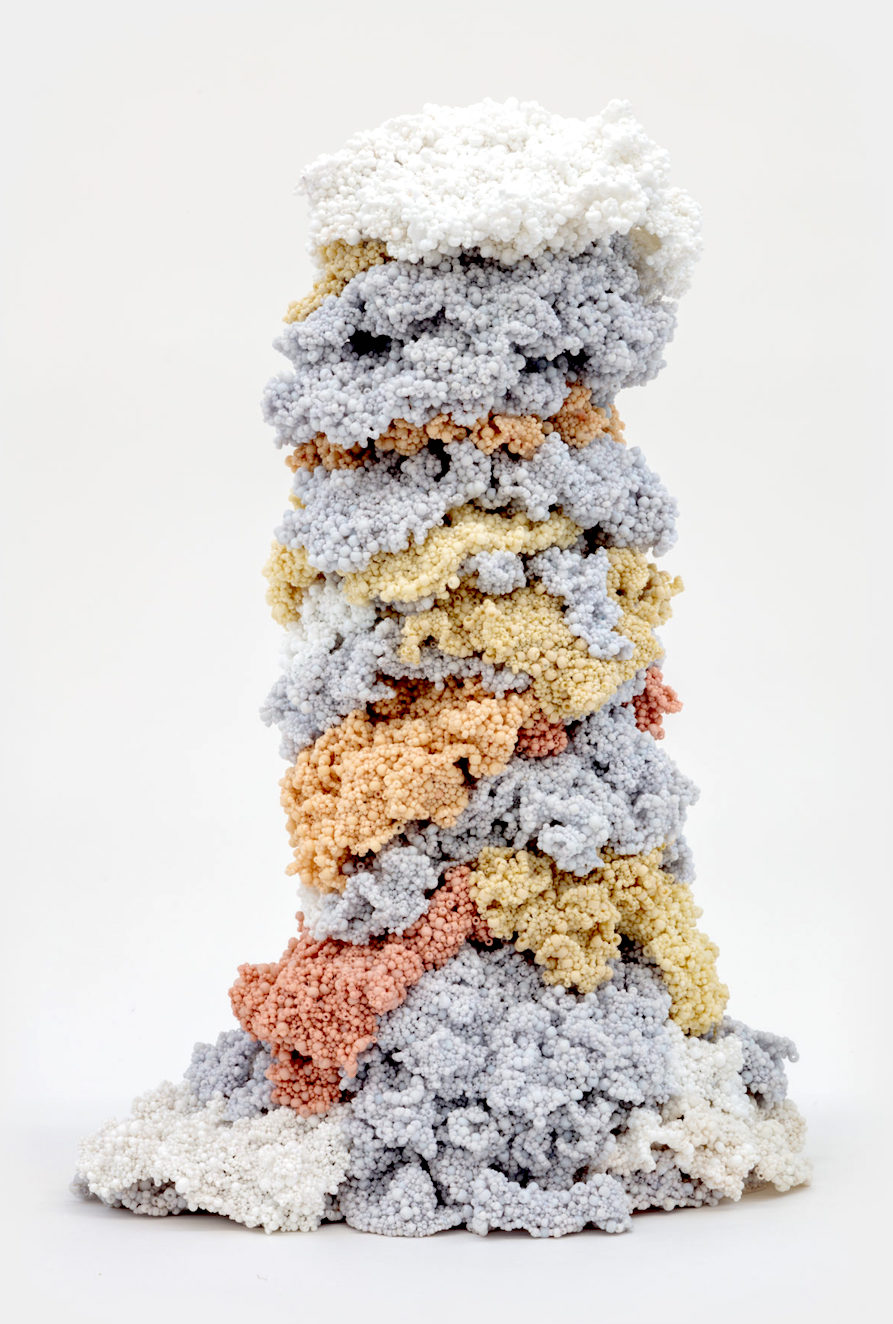
For the past 30 years, Lou’s practice has centred on her beadwork: weaving, painting and hammering tiny glass beads into at first, large-scale representative sculpture and later, producing abstract canvases and sculpture.
Lou is an American artist who has lived and worked in South Africa since 2005. While working on some very large installation pieces and sculptures in LA, she enlisted the help of community leaders in her area before locating a beading workshop in Kwazulu Natal to assist her with the completion of the work. She ended up moving to South Africa to live and work.
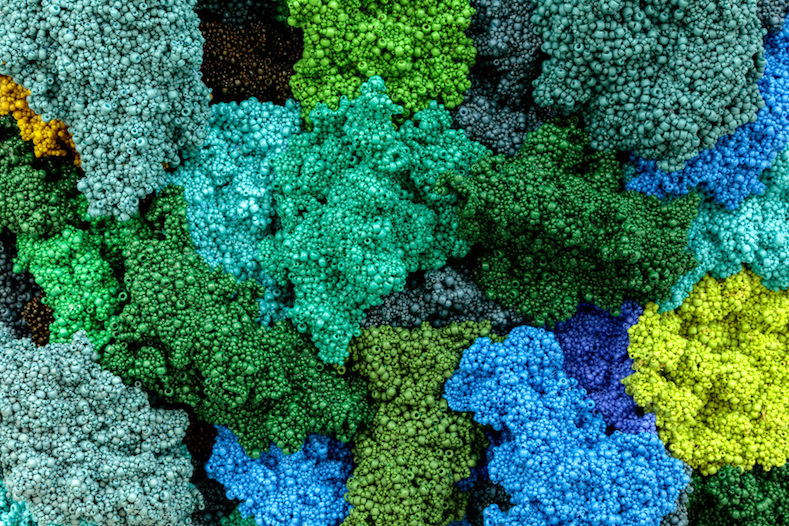 Liza Lou, Lichenform I (2018) detail
Liza Lou, Lichenform I (2018) detailIt was here, while working with a collective of Zulu women, that her work became more abstract, from bead-woven colour-field canvases to a series of 1,000 white “dishcloths”. This turned into a collaboration that still exists today. Even though she has returned to the States, these artists remain a source of inspiration to Lou and she continues to maintain the studio where these talented artisans' contribution remains integral to the successful outcome of her beaded art pieces.
The small, beaded panels that comprise this piece above are haphazardly covered in paint and then smashed to reveal the threads of beads below in gently broken clouded forms. All work is from her exhibition titled "Classification and Nomenclature of Clouds" from 2018.
Ozioma Onuzulike
Oziama Onuzulike is a Nigerian artist, born in 1972 in Achi, Enugu State. He is currently a Professor of ceramic art and African history and design at the University of Nigeria, Nsukka.
He is an artist who likes to encompass African natural materials in his work. This piece below incorporates earthenware and stoneware clays, ash glazes, recycled glass and copper wire and 5040 ceramic, palm kernel shell beads!
In his "Bead" series, he has taken the history of beads in Africa, recognizing their cultural and economic value alongside that of palm kernels.
Together with the inherent importance of cloth in Africa, he has produced art pieces that bind together all that significant heritage into a contemporary statement on both the current state of social affairs on the continent and the imbalance in political relations between Africa and the West.
"I have made millions of palm kernel shells in terracotta, turning many of them into glass beads in a very laborious studio process. With them, I have woven mixed media ceramic structures that resemble Africa’s prestige cloths (such as the Nigerian Akwete and Aso Oke) or imported ones (such as the lace fabric) that are also highly regarded in Africa as markers of social status. It is like weaving Africa’s history – past and present".... Artist's comment in Garland Magazine
Lin Barrie
Lin Barrie is a contemporary painter from Zimbabwe who works in multi-disciplinary fields including painting in acrylics, drawing, soft sculpture and installations. In this unique painting of hers seen below, she uses seed beads to enhance and emphasize her visual representation of the local traditions and culture of the area in which she lives in the South East of Zimbabwe.
Dancers from Mozambique join the local Lowveld ladies in a Xangana dance festival wearing traditional, much-gathered and beaded chibabela skirts. Barrie says "I hope that the shape in which I have stitched the beads, flowing over the painting, is giving a sense of the dance rhythm"
Tamlin Blake
Tamlin Blake is a multi-media artist originating from South Africa. She is currently living in a small town in the Cape called Riebeeck West where she has her own studio and is influenced by her rural surroundings and the communities that live there.
A prominent feature of Blake's work is her fascination with different materials and manipulating mediums to create new methods and new styles. She was very instrumental in developing the beading techniques used by the artists who work in collaboration with bead studios formed by traditional beaders and craftspeople.
The main body of her beaded work are finely woven tapestries of South African stamps executed using glass seed beads, a traditional craft idiom that has strong association with indigenous SA cultures thereby offering a reference to the troubled past of her homeland.
A central theme of Blake's work is a concern with cross cultural symbols of wealth and status in SA. She is also concerned with identity and what underpins individuals' sense of belonging.
Collaborations with Qaqambile
Qaqambile Bead Studio (previously the Qubeka Bead Studio) is a creative enterprise formed in 2004 by 3 women, Nolubabalo Kanku, Nelisiwa Skiti and Mandisa Masina.
Starting out under the direction of curator Jeanetta Blignaut, their business has endured and evolved for over 15 years and they have risen to sensational heights, working with many contemporary African artists to create collaborative art pieces that are held in contemporary collections all over the world.
Qaqambile have produced exciting and meaningful work with MashT Design Studio, attracting acclaim for their work that was showcased at Milan Design Week 2019. This Bright Light was designed by Thabisa Mjo and crafted by master-bearer Neliswa Sigwela from Qaqambile. Tens of thousands of beads were expertly arranged on beautifully turned timber light shade.
They have also exhibited at 1:54 Contemporary African Art fair as part of Nando's and Spier's Art partnership in 2022 at Somerset House, London.
Conrad Botes, Kagiso Pat Mautloa, Liza Grobler, Adolf Tega, Marlise Keith and Ronel de Yager have all worked with this resoundingly successful bead workshop called Qaqambile.
The studio has mastered sensitivity to each partner-artist's particular style. When working on a collaborative piece, at least 3 beaders work on any one tapestry so that the finished art piece functions as a cohesive whole, capturing the overall style of the originator.
Marlise Keith's colorful surfaces translate well into beads as does the fineness of her rendition. The artful quality of the beaded surfaces underlies the deep questioning of her work.
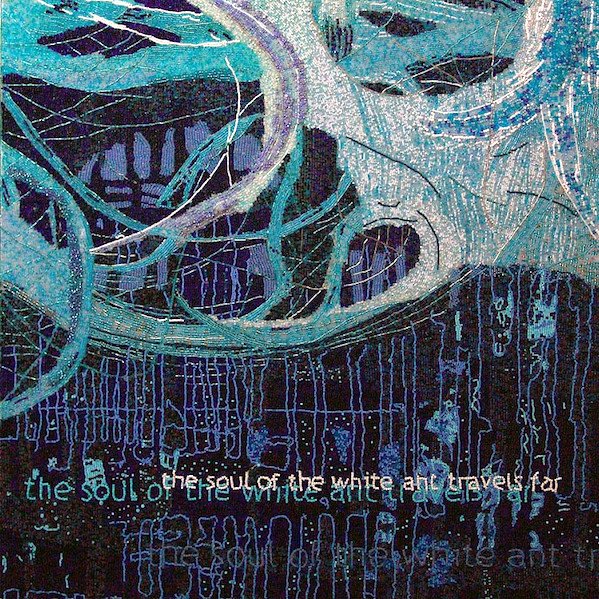 Beaded panel, 'The Soul of the White Ant' installation, Liza Grobler and Qaqambile
Beaded panel, 'The Soul of the White Ant' installation, Liza Grobler and QaqambileThe collaboration between Ronal de Yager and Qaqambile has produced many, very special pieces. The artist knew that her latest work with its tapestry like feeling, had qualities that would translate beautifully into glass beads and the artisans in the studio willingly accepted the challenge of capturing the minute detail of form, structure and color that make up de Yager's intense pieces.
Says Ronal "The millions of vertical brushstrokes in my oil paintings have an impressionistic aesthetic, which Qaqambile translated beautifully into glass beads. This process of decoding and re-encoding the image also added to the conceptual narrative of the work".
Says Ronal "The millions of vertical brushstrokes in my oil paintings have an impressionistic aesthetic, which Qaqambile translated beautifully into glass beads. This process of decoding and re-encoding the image also added to the conceptual narrative of the work".
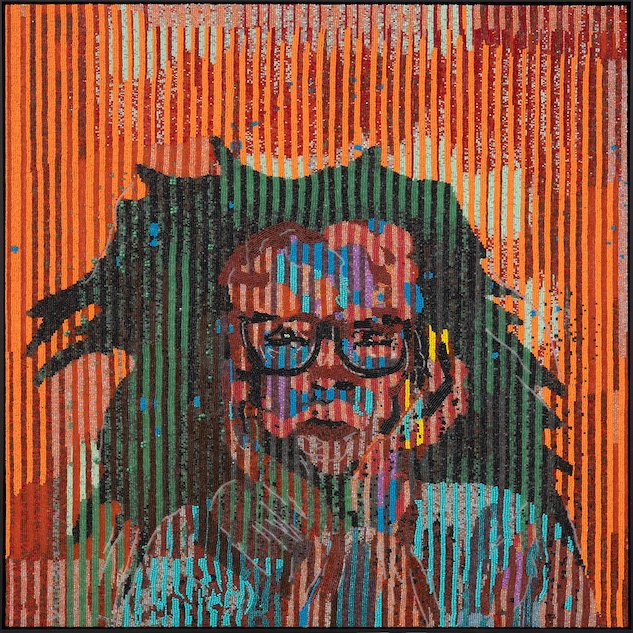 Adolf Tega in collaboration with Qaqambile, 'Missing Home'
Adolf Tega in collaboration with Qaqambile, 'Missing Home'This beaded piece by Adolf Tega was shown at 1:54 Contemporary African Art Fair, London
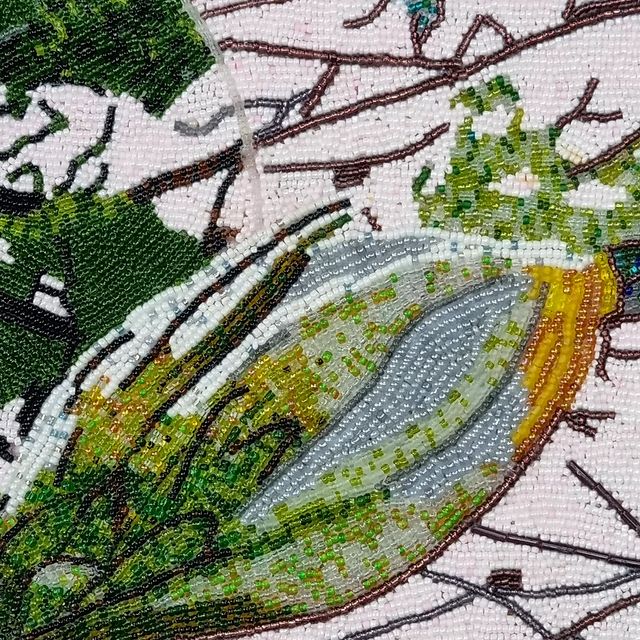
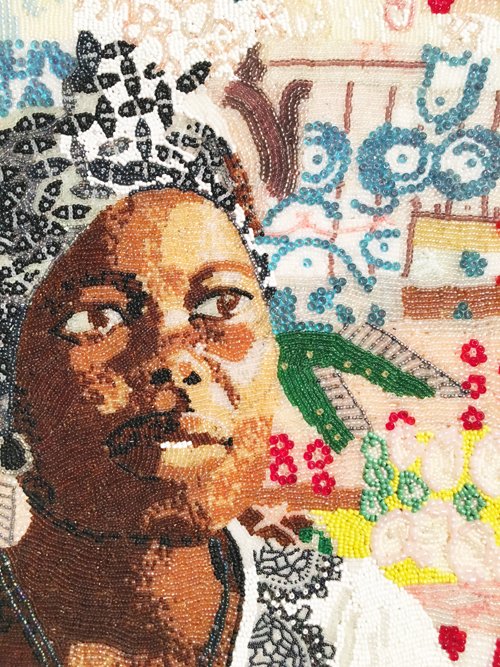
Qaqambile Bead Studio not only produces beaded pieces for others but they also develop their own artworks, telling stories from everyday life around them in Cape Town and their rural home area of the Eastern Cape.
Beaded Tapestry
There is one group of artists from Africa who have become synonymous with producing exquisite, finely-beaded tapestries...
Ubuhle
Founded in 1999 with Beverley Gibson, Ntombephi "Induna" Ntobela, the first artist and co-founder of Ubuhle learnt to bead from her mother. She took that traditional skill and transformed it into a contemporary art form... glass bead tapestries that are now renowned the world over and are to be found in prestigious collections such as the Smithsonian and other elite establishments, or exhibited in major institutions in Europe and America.
The team now consists of 5 bead-artists.... Ntombephi Ntobela, Zondlile Zondo, Thanda Ntobela, Zandile Ntobela and Nonhlakanipho Mndiyatha.
By 2006, the co-operative was a way for women to combine their traditional skills, make them profitable and achieve financial independence. The bead artists sew beads onto large panels of black fabric in intricate figurative, geometric or abstract designs which can singularly take more than 10 months to complete.
These masterfully constructed works are termed ndwangos which translate as cloth or rag and are reminiscent of the Xhosa headscarves and skirts which many of them grew up wearing.
Ubuhle means “beauty” in the Xhosa and Zulu languages and it describes the shimmering quality of light on glass that for the Xhosa people has a particular spiritual significance. The content and symbolism in their tapestries reflects deep connection to family and community, including their cows who hold much significance in their culture!
Ubuhle Women: Beadwork and the Art of Independence was developed by the Smithsonian Anacostia Community Museum, Washington, DC, in co-operation with curators Bev Gibson, James Green, and Ubuhle Beads. It has been organized for tour by International Arts & Artists, Washington, DC and features 20 individual Ndwango pieces.
Demetri Broxton
This artist whose dynamic work is shown below is not African, rather he is descended from Creole and Filipino backgrounds but he is passionate about infusing craft and folk traditions into his pieces. In this series he is heavily influenced by Yoruba beading whose ceremonial objects are richly adorned with beads and the textile traditions of Nigerian royalty.
Mixing it up with contemporary American hip-hop culture he has produced exciting, powerful and lasting new totems and sculptures that embrace the old with the new.
His focus for the exhibition called "Performing Labour" at Patricia Sweetow Gallery in Los Angeles in 2019, was boxing gloves and punching bags... embellished, transformed and hand-embroidered with beads, shells, crystals, nails, mirrors, chain, brass rifle bullets and other found materials. He also uses herbs and essential oils, frankincense, myrrh and High John the Conqueror powder for a multi-sensory experience.
The elements of Nigerian royal regalia, Southern states voodoo traditions, Mardi Gras costumes and quotes from the triumphant voice of hip hop are seamlessly blended with beaded patchwork.
Broxton has continued to produce more work in this vein, this soft sculpture piece seen here is from his very latest exhibition at Sweetow Gallery.
For insight into the history of beads in Africa go to this link here on this website
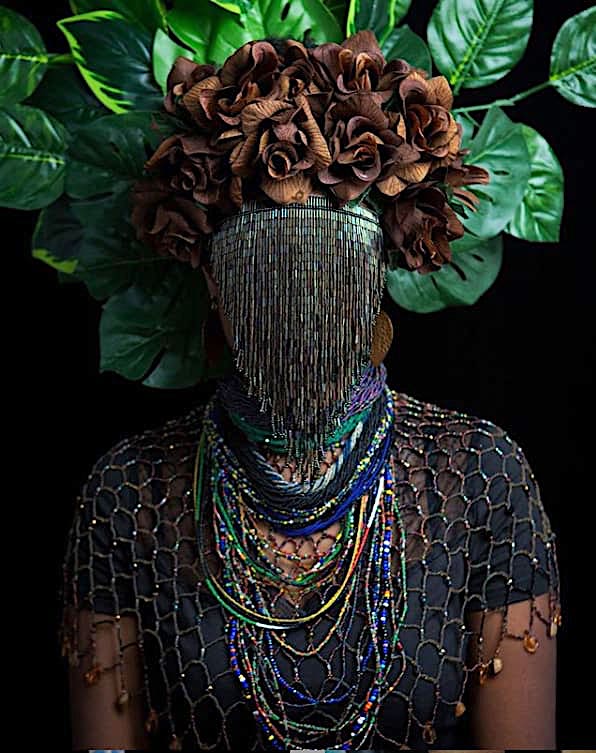
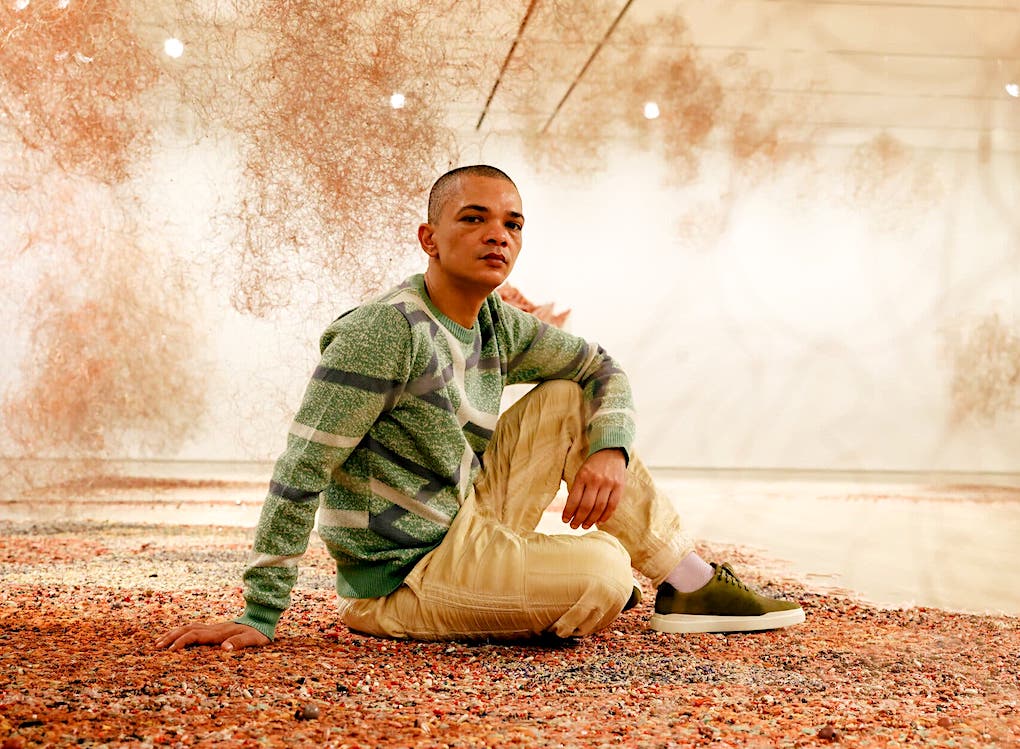

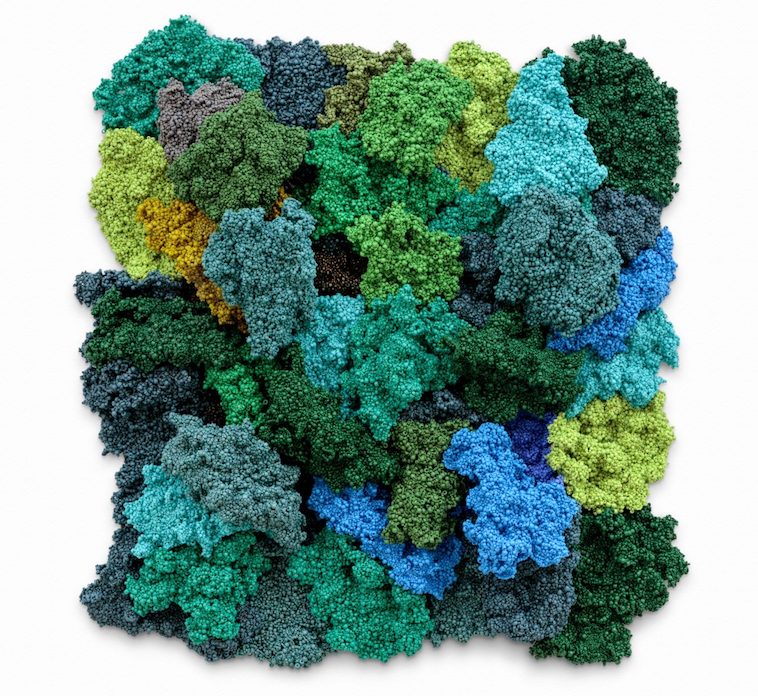
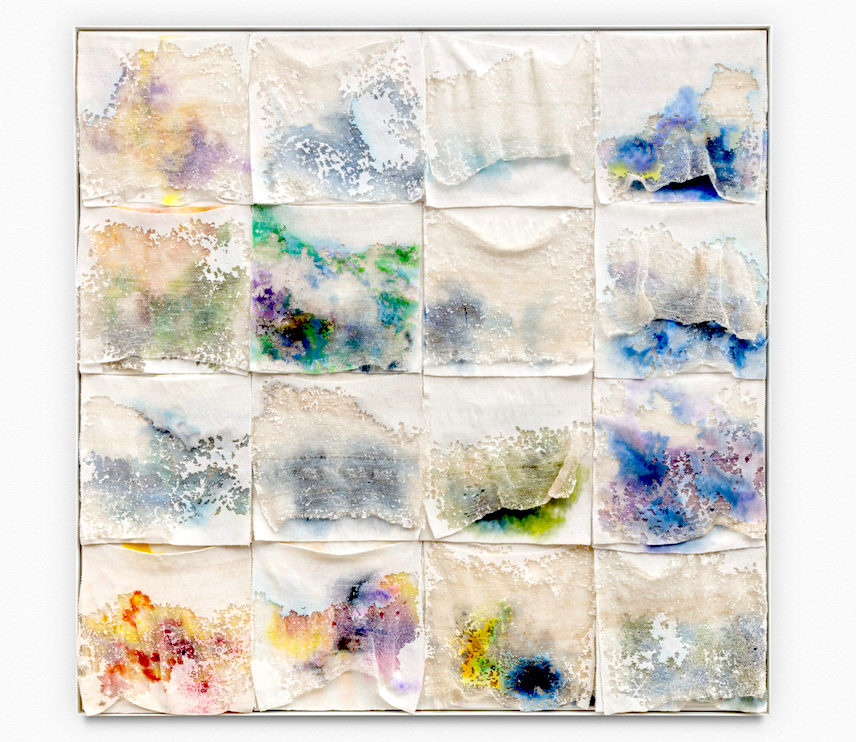
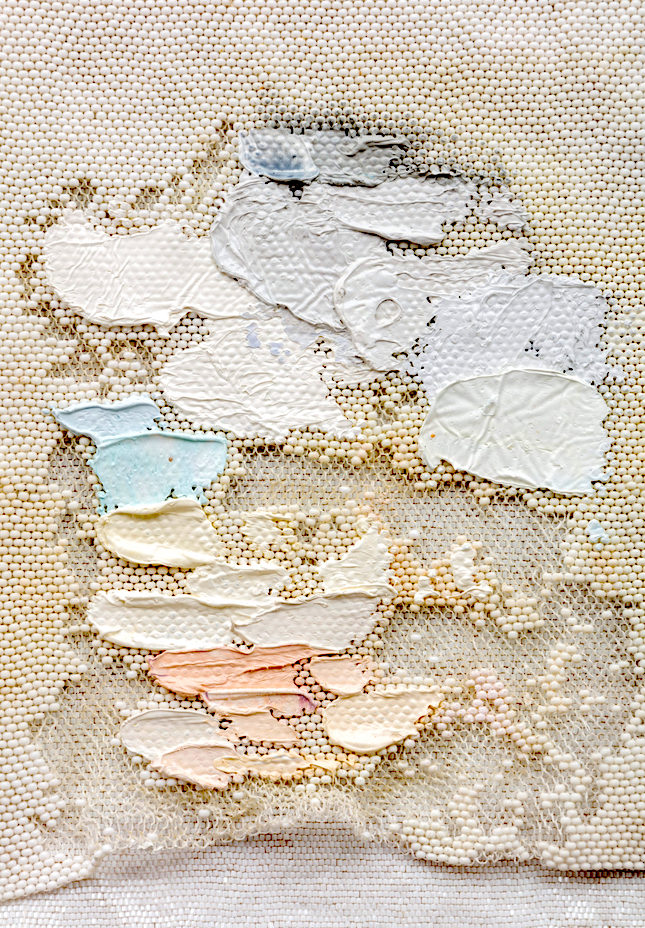
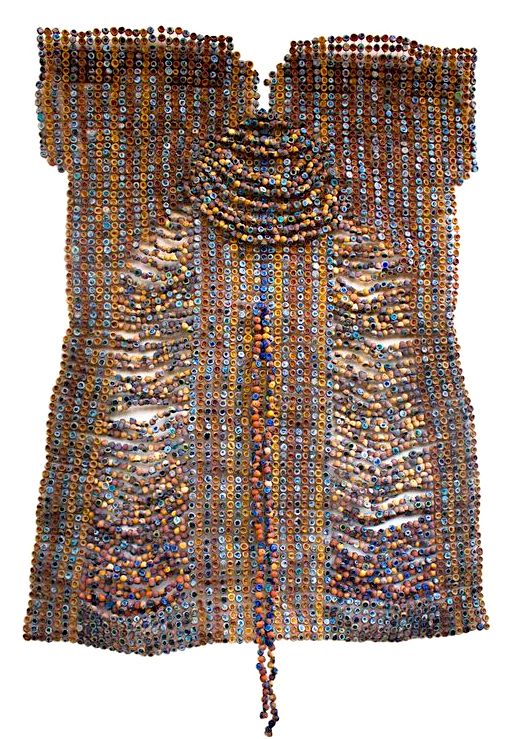
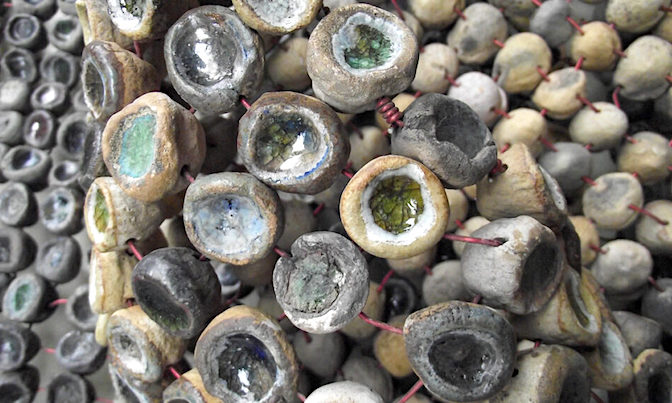
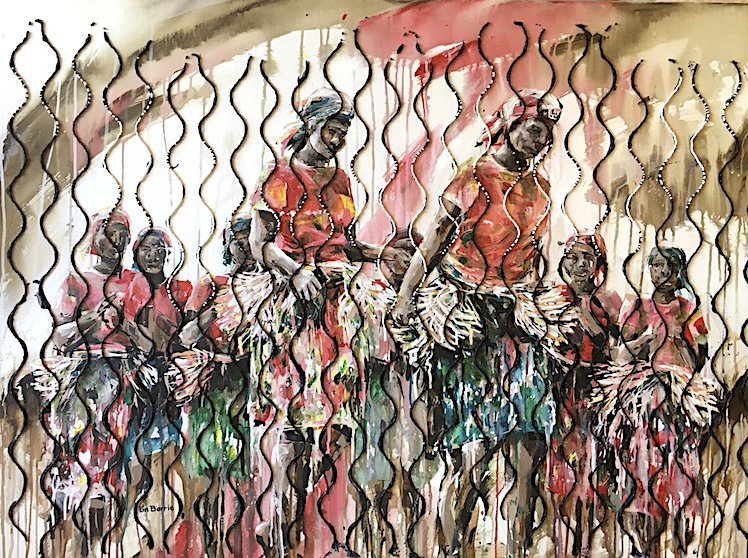
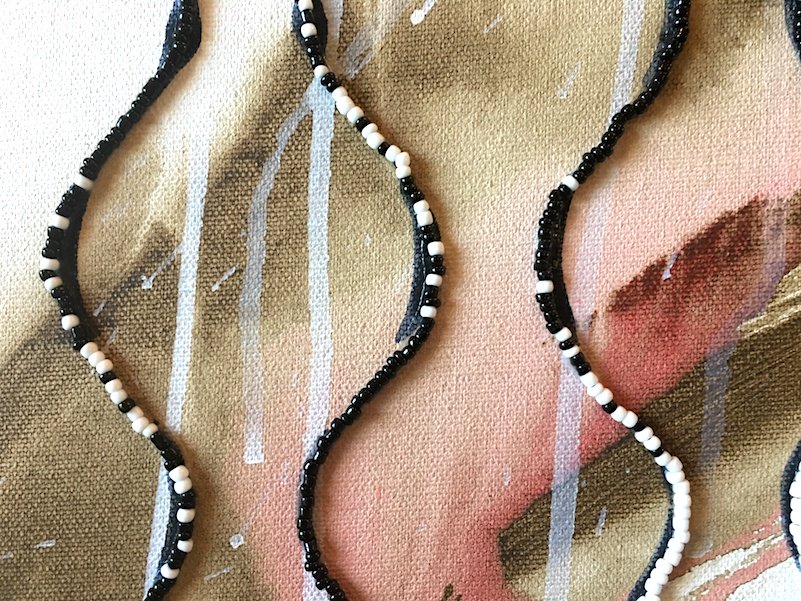
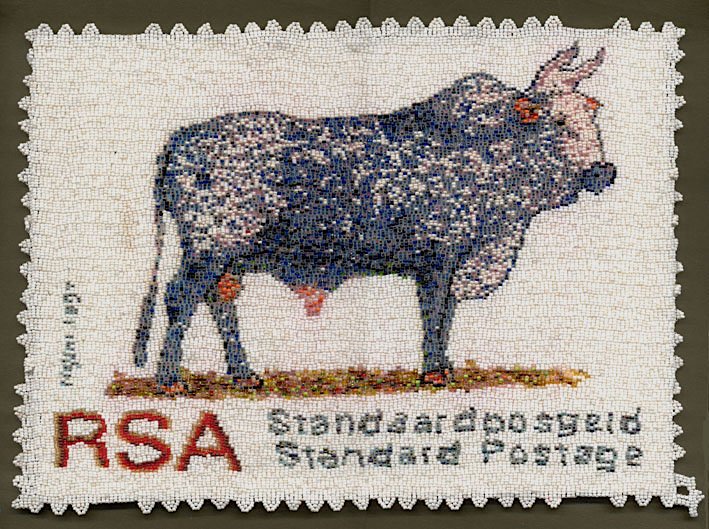
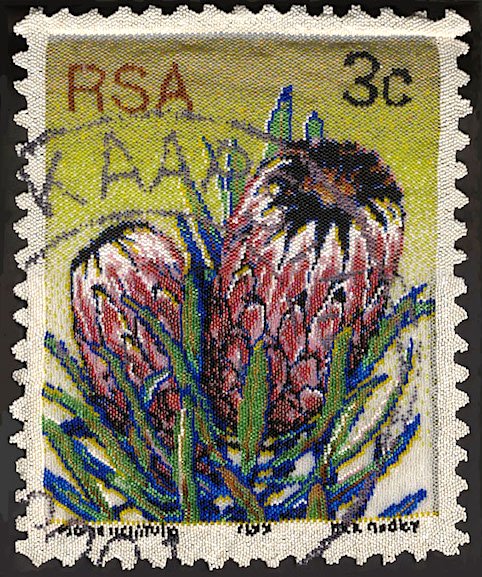
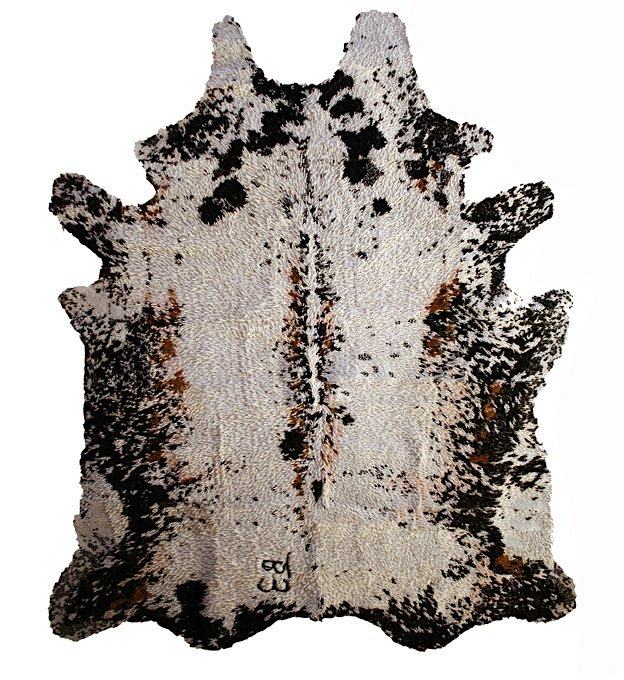
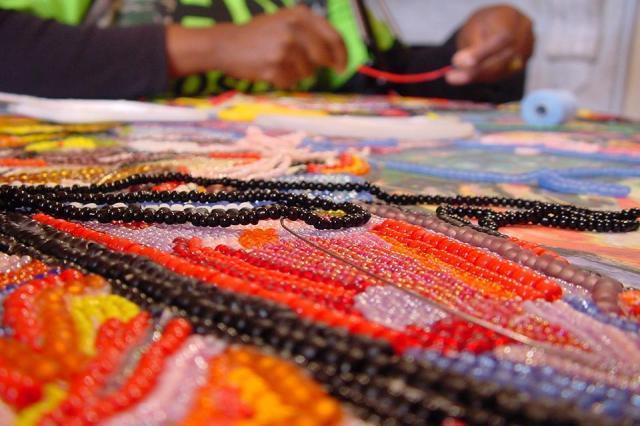
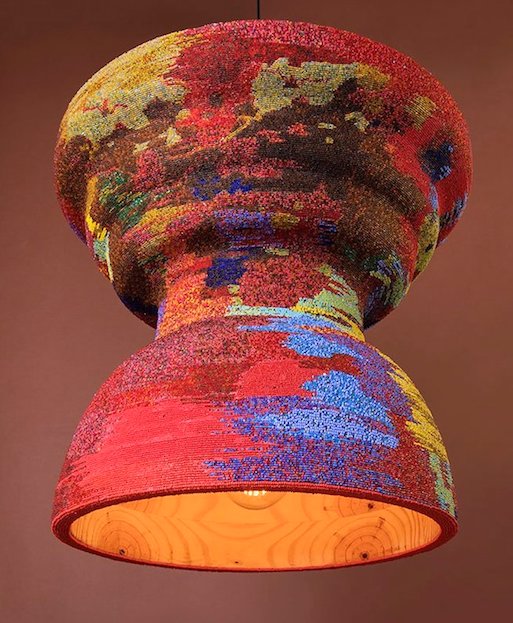
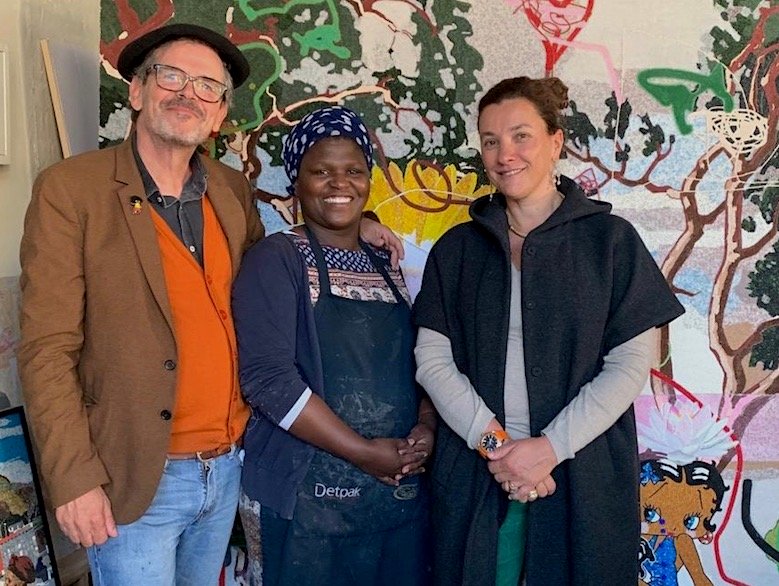
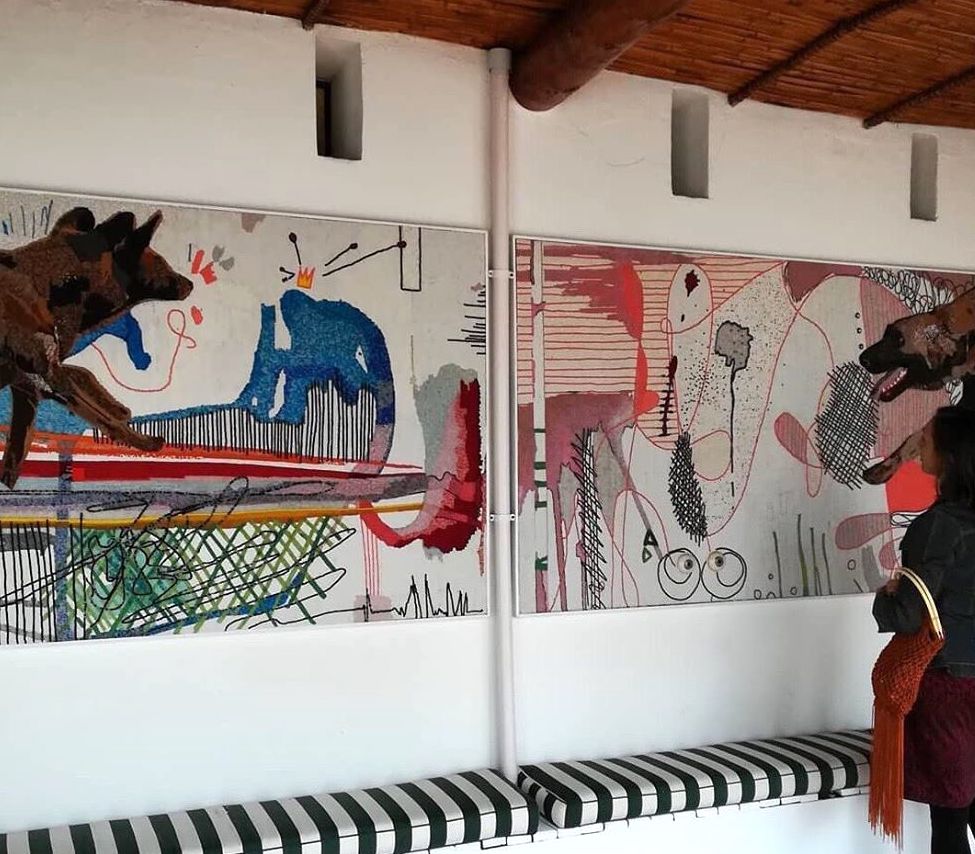
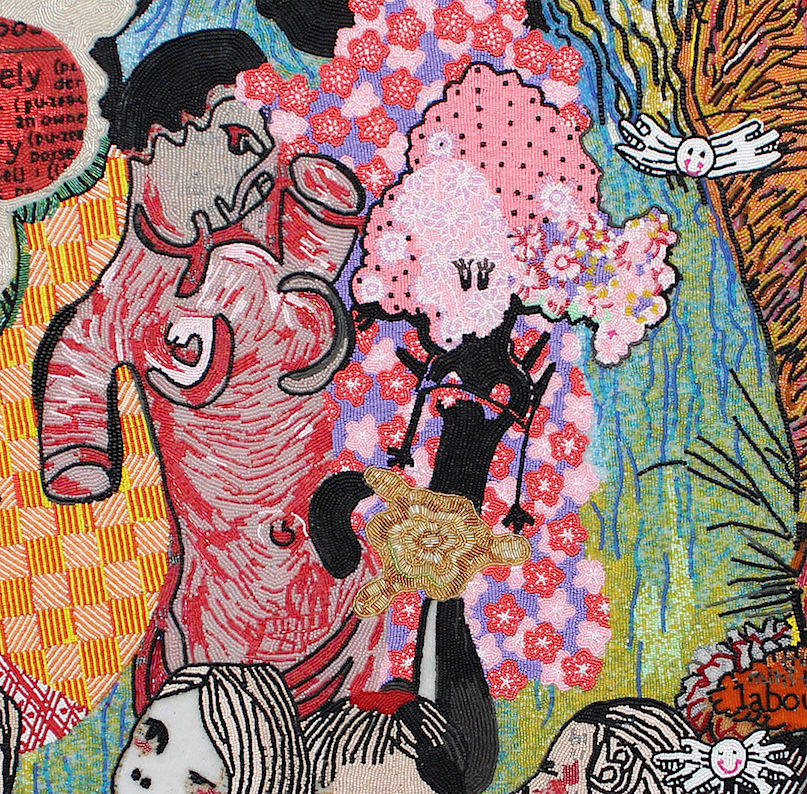
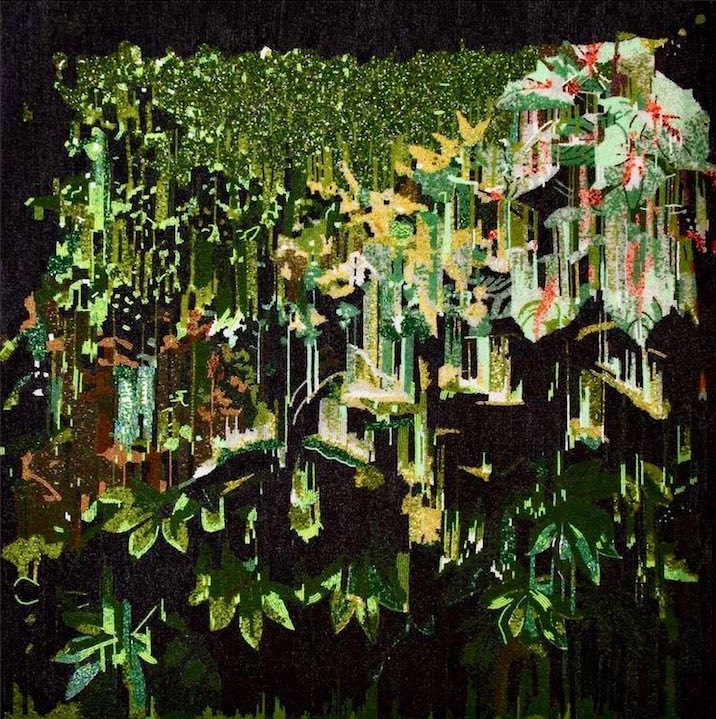
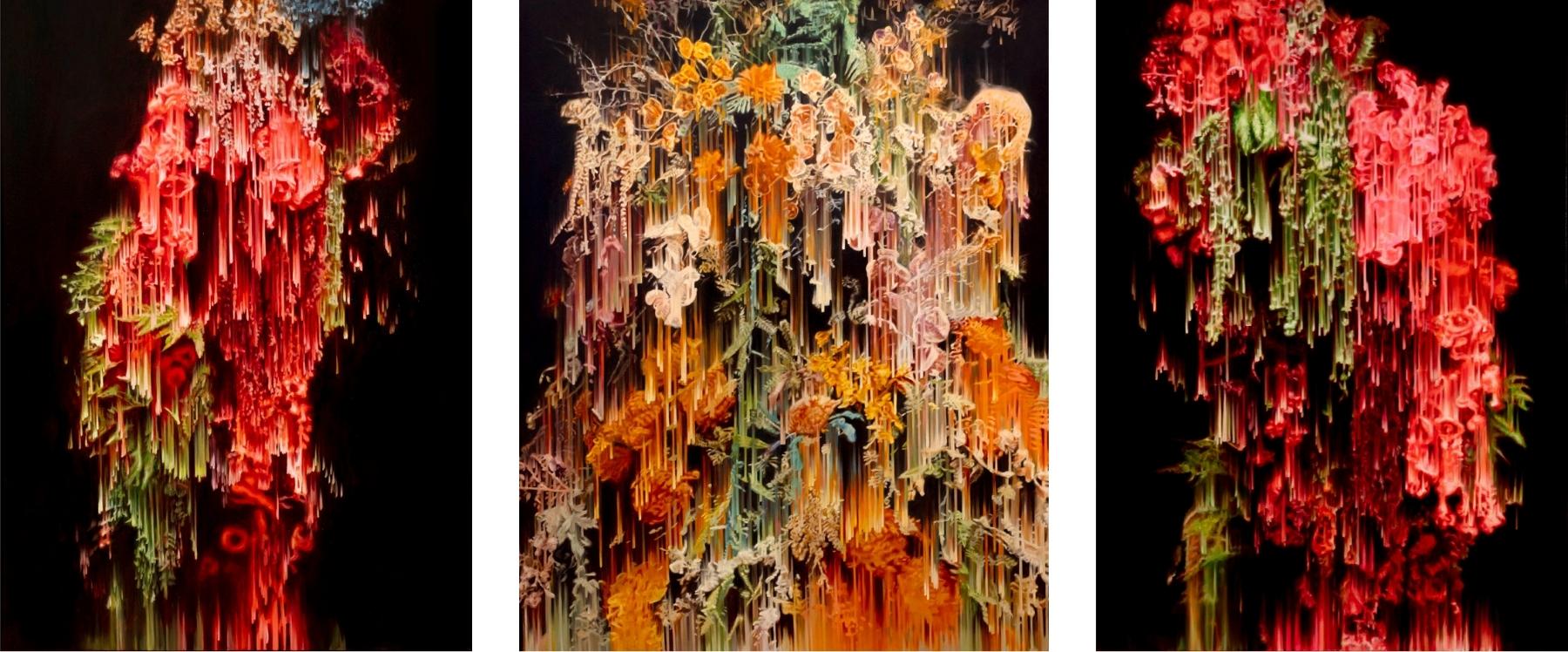
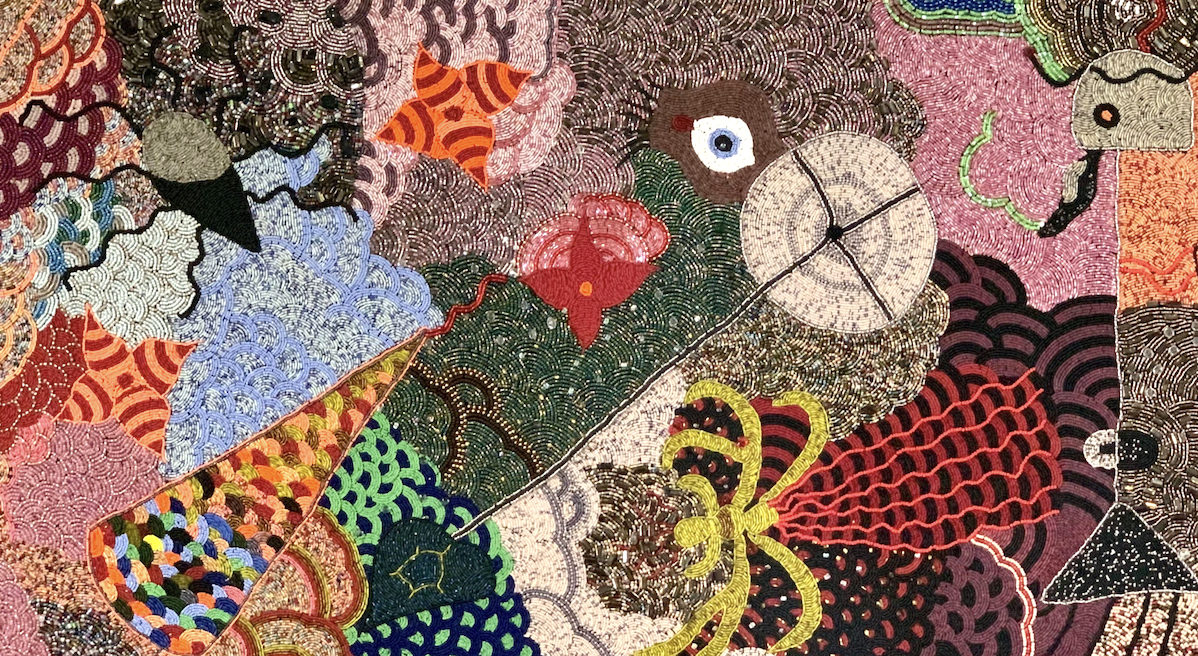
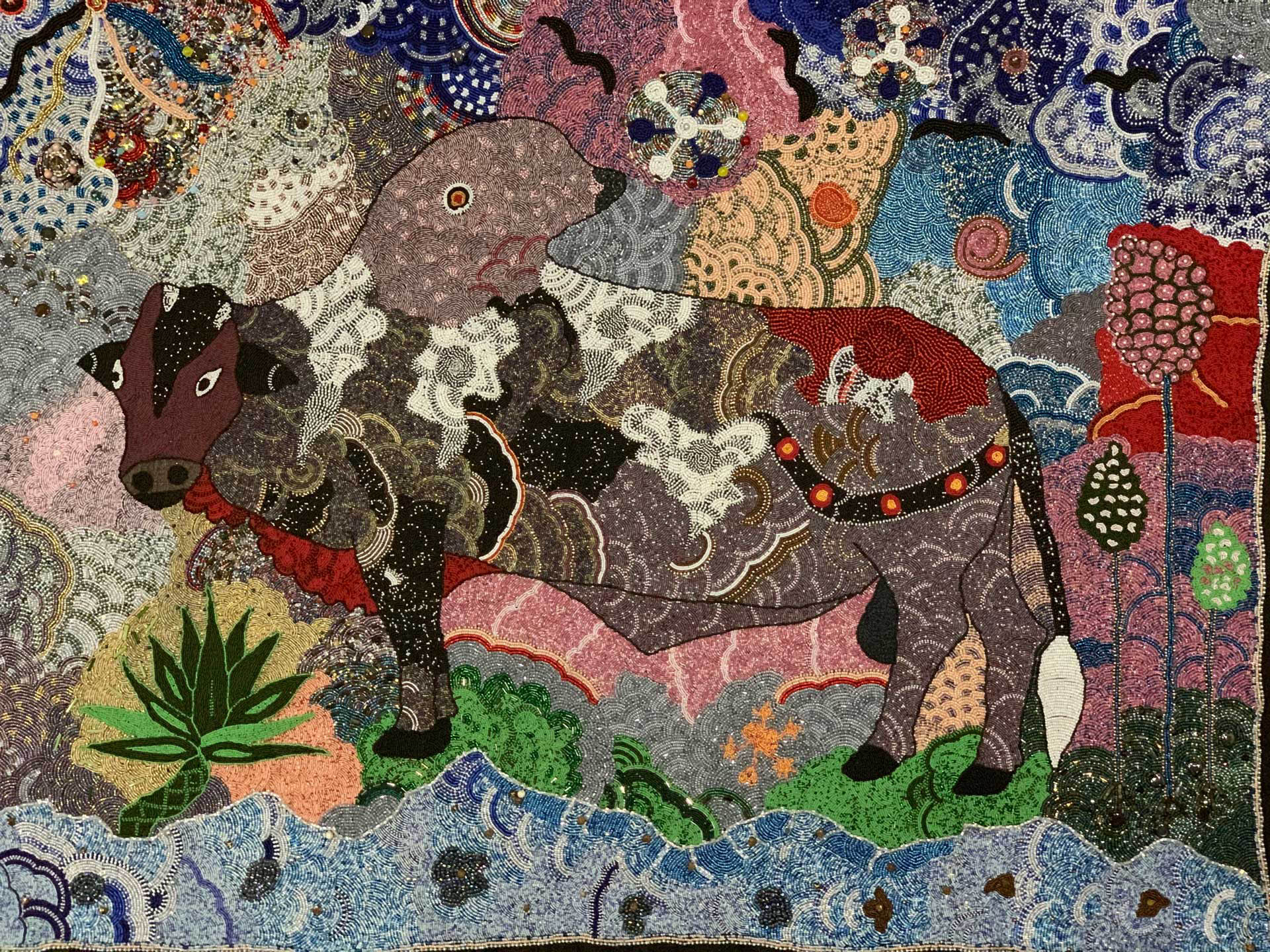
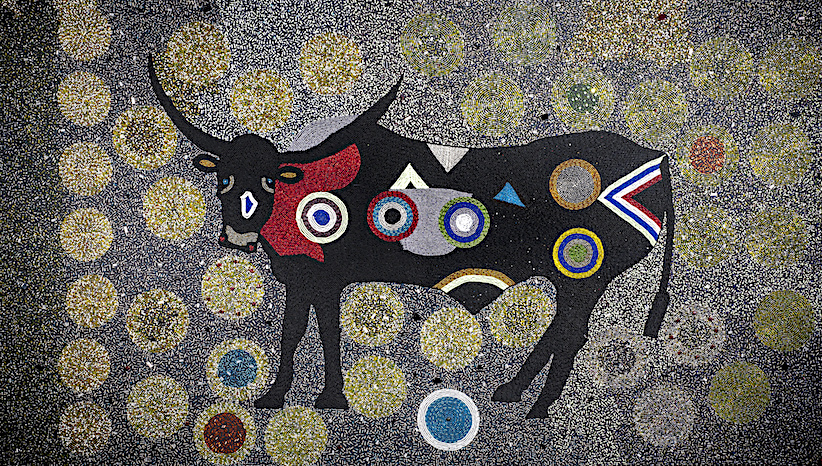
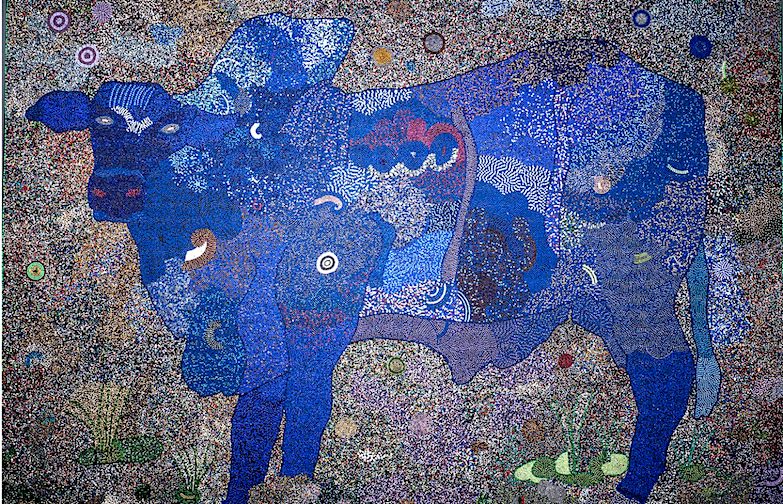
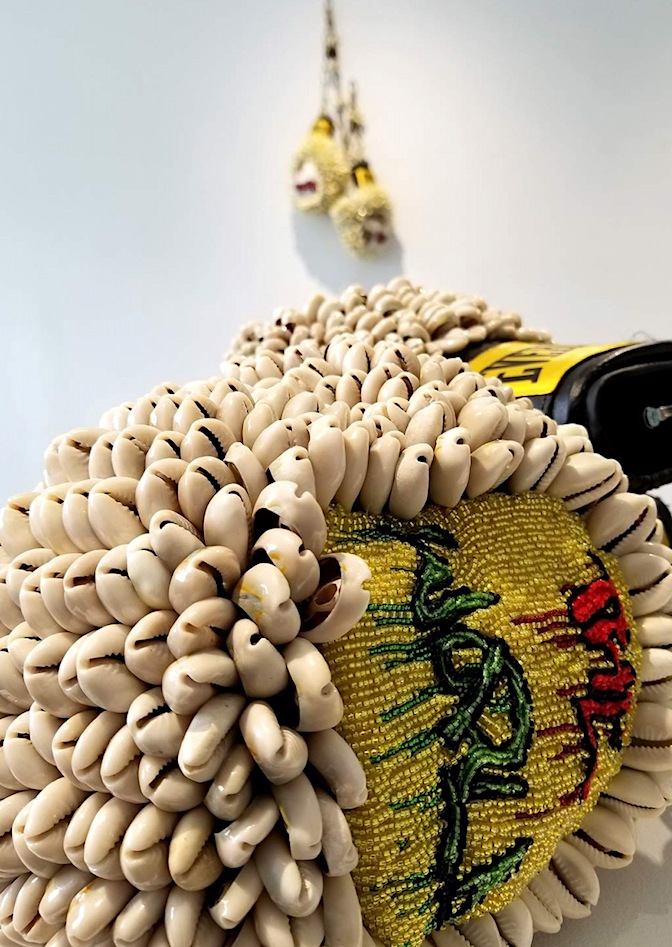
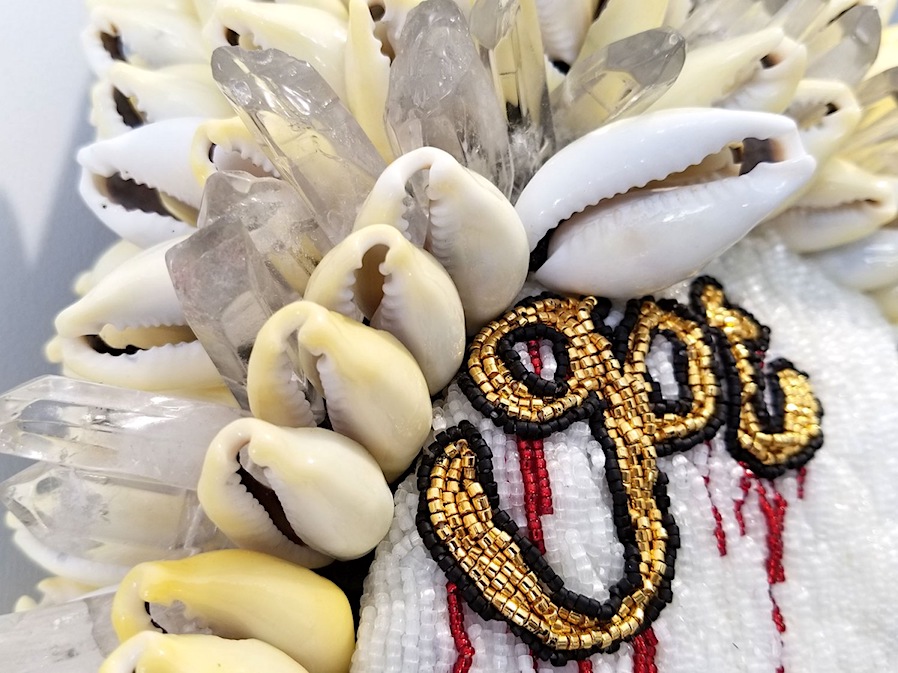
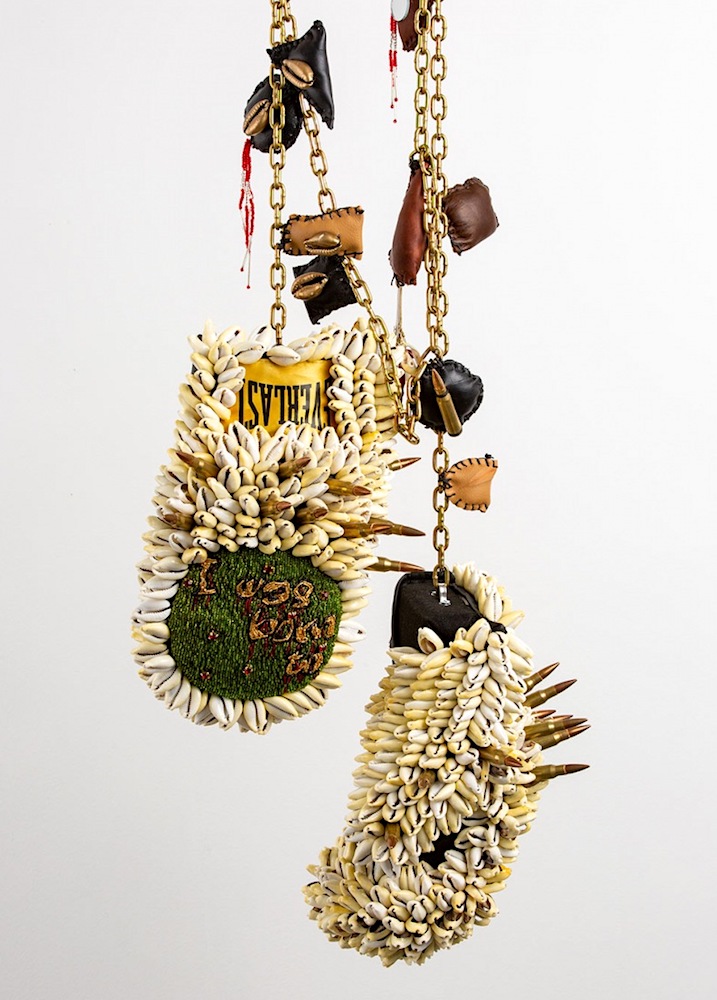
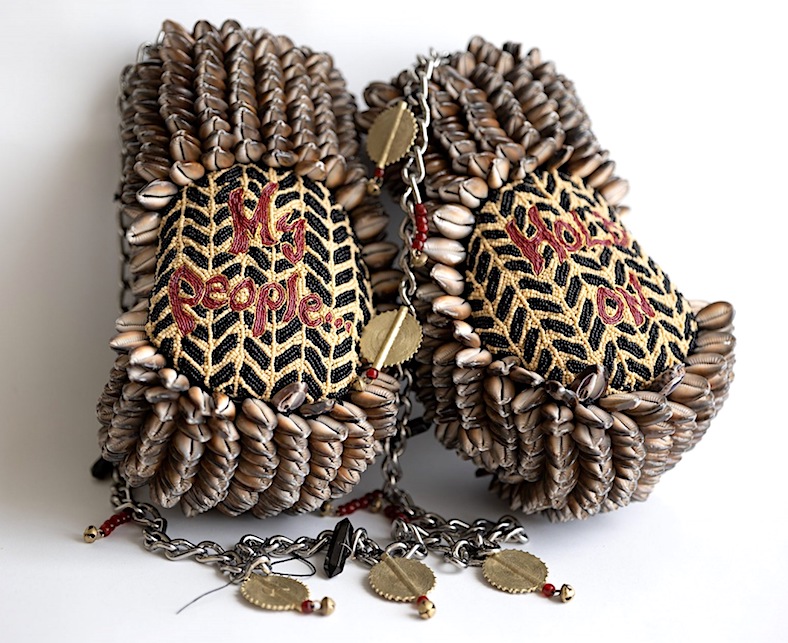




New! Comments
Have your say about what you just read! Leave me a comment in the box below.